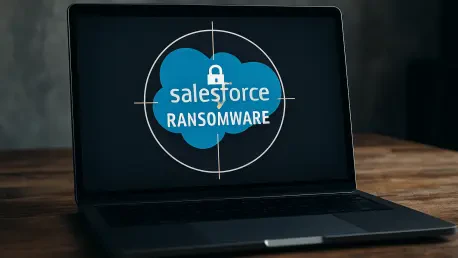Short introductionI’m thrilled to sit down with Maryanne Baines, a renowned authority in cloud technology with extensive experience evaluating cloud providers, their tech stacks, and how their solutions serve various industries. Today, we’re diving into the recent ransomware extortion attempt targeting Salesforce by a group known as Scattered LAPSUS$ Hunters. We’ll explore Salesforce’s response, the nature of the threat, the tactics used by the attackers, and the broader implications for cloud security and corporate policies on ransom demands.
Can you walk us through Salesforce’s position on paying ransom demands in light of the recent extortion attempt by Scattered LAPSUS$ Hunters?
Salesforce has taken a very firm stance against paying any ransom demands. They’ve made it clear through public statements that they will not engage or negotiate with these threat actors under any circumstances. This was communicated directly by a spokesperson to the press, and they’ve reportedly shared the same message with their customers, emphasizing their commitment to not giving in to extortion. It’s a bold move that signals they’re prioritizing principle over immediate risk mitigation.
How do you think this ‘no payment’ policy might influence other companies dealing with similar cyber threats?
I believe it sets a powerful precedent. By refusing to pay, Salesforce is sending a message to cybercriminals that extortion won’t always yield a payout, which could deter future attacks. It also encourages other companies to adopt similar policies, fostering a collective resistance against ransomware. However, it’s a double-edged sword—refusing to pay might lead to data leaks, which can damage customer trust. Still, in the long run, this stance could help shift the economics of cybercrime.
What exactly are the attackers claiming to have taken from Salesforce environments?
The group, calling themselves Scattered LAPSUS$ Hunters, claims to have stolen a massive amount of data—nearly 989.5 million customer records. They’ve threatened to publish this information online if their ransom demands aren’t met. It’s a staggering number, and the sheer scale of the alleged theft is what makes this incident particularly alarming for affected organizations and their customers.
Are these records tied to a recent breach, or do they stem from earlier incidents?
From what’s been reported, these records aren’t from a new breach. They appear to be linked to previous intrusions, meaning the data was likely stolen in earlier attacks and is now being weaponized for extortion. Salesforce has indicated that this isn’t a fresh compromise of their systems, which is somewhat reassuring but still leaves open questions about how long this data has been in the wrong hands.
What has Salesforce said about the security of their platform in connection with this incident?
Salesforce has been very clear that there’s no evidence their platform itself was hacked or compromised in this case. They’ve emphasized that this incident doesn’t stem from any known vulnerability in their technology. Their official updates stress that their systems remain secure, and they’re working to reassure customers that this isn’t a flaw in their infrastructure but rather a result of external factors tied to past incidents.
Can you shed light on who is behind this extortion attempt and the tactics they’re using to pressure companies like Salesforce?
The group behind this is calling itself Scattered LAPSUS$ Hunters. They’ve listed 39 companies’ Salesforce environments on a data-leak site, using the threat of publishing stolen data as leverage. What’s particularly striking is their offer of $10 in Bitcoin to anyone willing to harass executives of the targeted companies. It’s a low-cost, high-impact tactic designed to create chaos and pressure victims into paying. This kind of psychological warfare isn’t entirely new in cybercrime, but it’s certainly a brazen escalation.
How does the initial breach tie into this situation, particularly with regard to SalesLoft’s Drift application?
The backstory here is that the data was allegedly stolen earlier this year through a breach of SalesLoft’s Drift application, which integrates with Salesforce for customer service automation. Attackers, reportedly linked to a group known as ShinyHunters, compromised this app and accessed OAuth tokens. These tokens essentially acted as keys, allowing the attackers to infiltrate numerous companies’ Salesforce instances and extract sensitive data. It’s a classic example of how third-party integrations can become a weak link in the security chain.
What actions has Salesforce taken since becoming aware of these extortion attempts?
Salesforce has been proactive in responding to the situation. They’ve partnered with external experts and authorities to investigate the claims thoroughly. They’re also staying engaged with affected customers, offering support to help mitigate any potential fallout. Their focus seems to be on transparency and collaboration, ensuring that those impacted have the resources and information they need to navigate this threat.
What’s your forecast for the future of cloud security in light of incidents like this one?
I think incidents like this are a wake-up call for the industry to prioritize securing third-party integrations and access controls, like OAuth tokens, which are often exploited as entry points. We’re likely to see stricter standards for vetting partners and more robust authentication mechanisms. Additionally, as companies like Salesforce take a hard line against ransom payments, I expect a shift in how cybercriminals operate—potentially moving toward more destructive attacks if extortion loses its profitability. Cloud providers will need to stay ahead of these evolving tactics with proactive defense strategies and greater customer education on shared responsibility for security.









